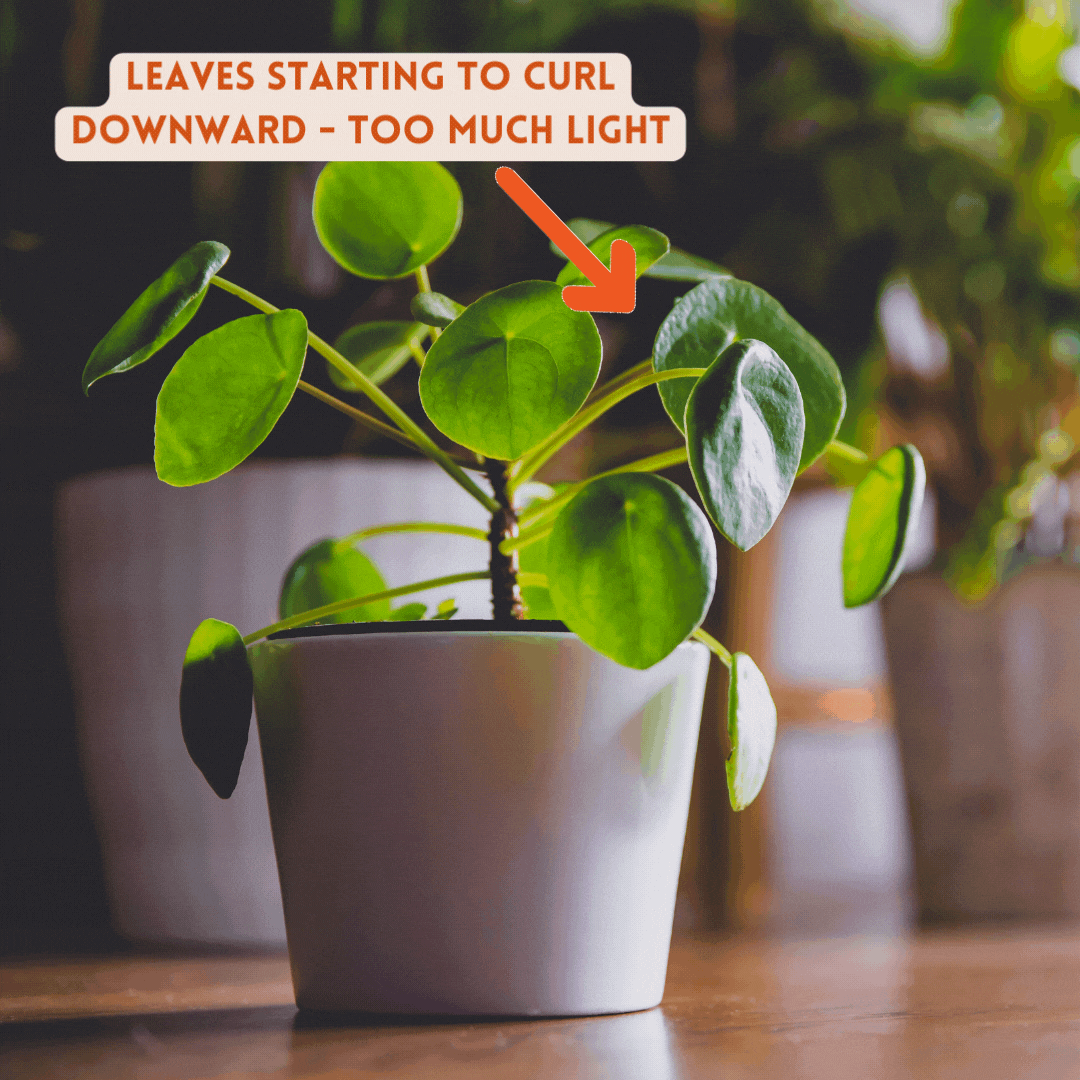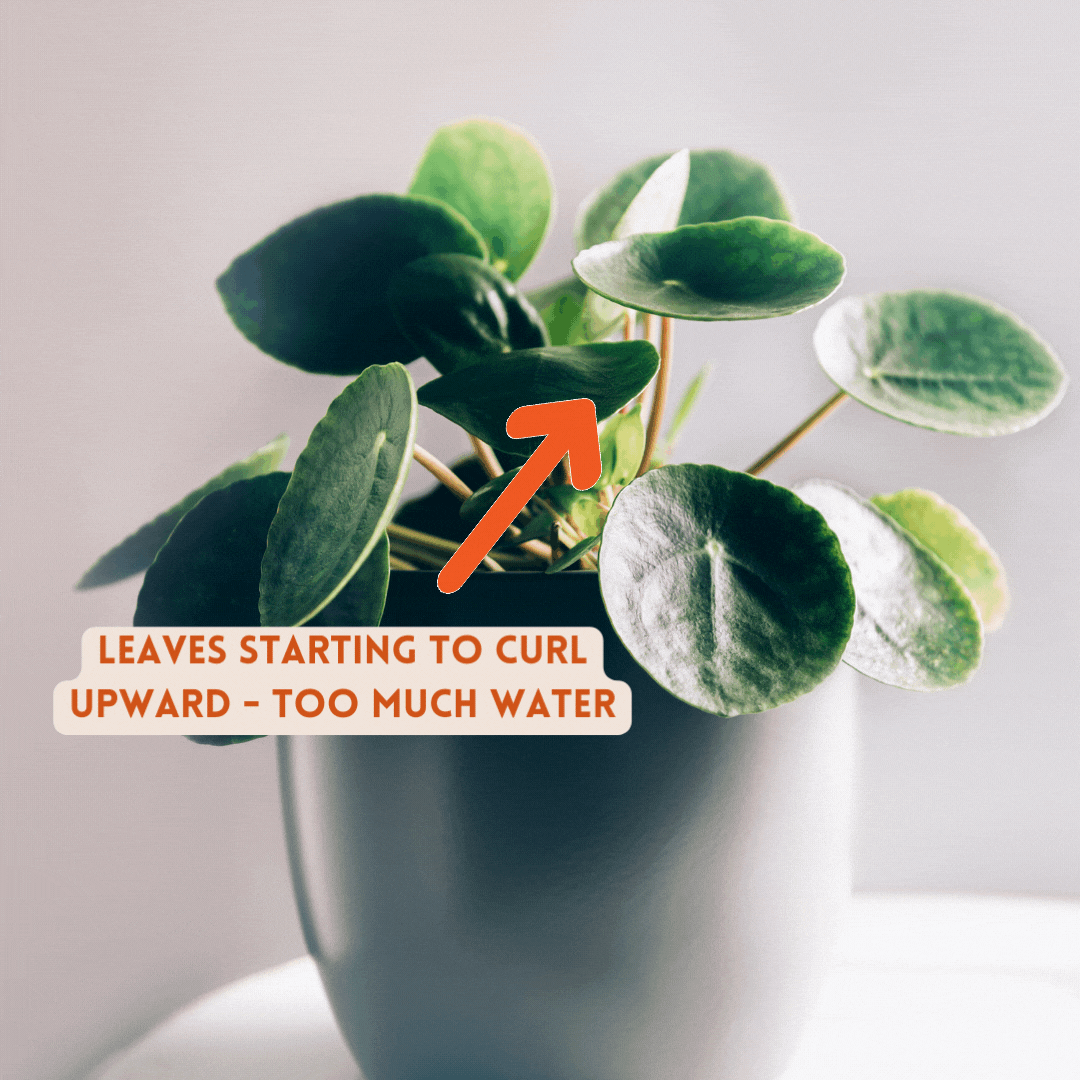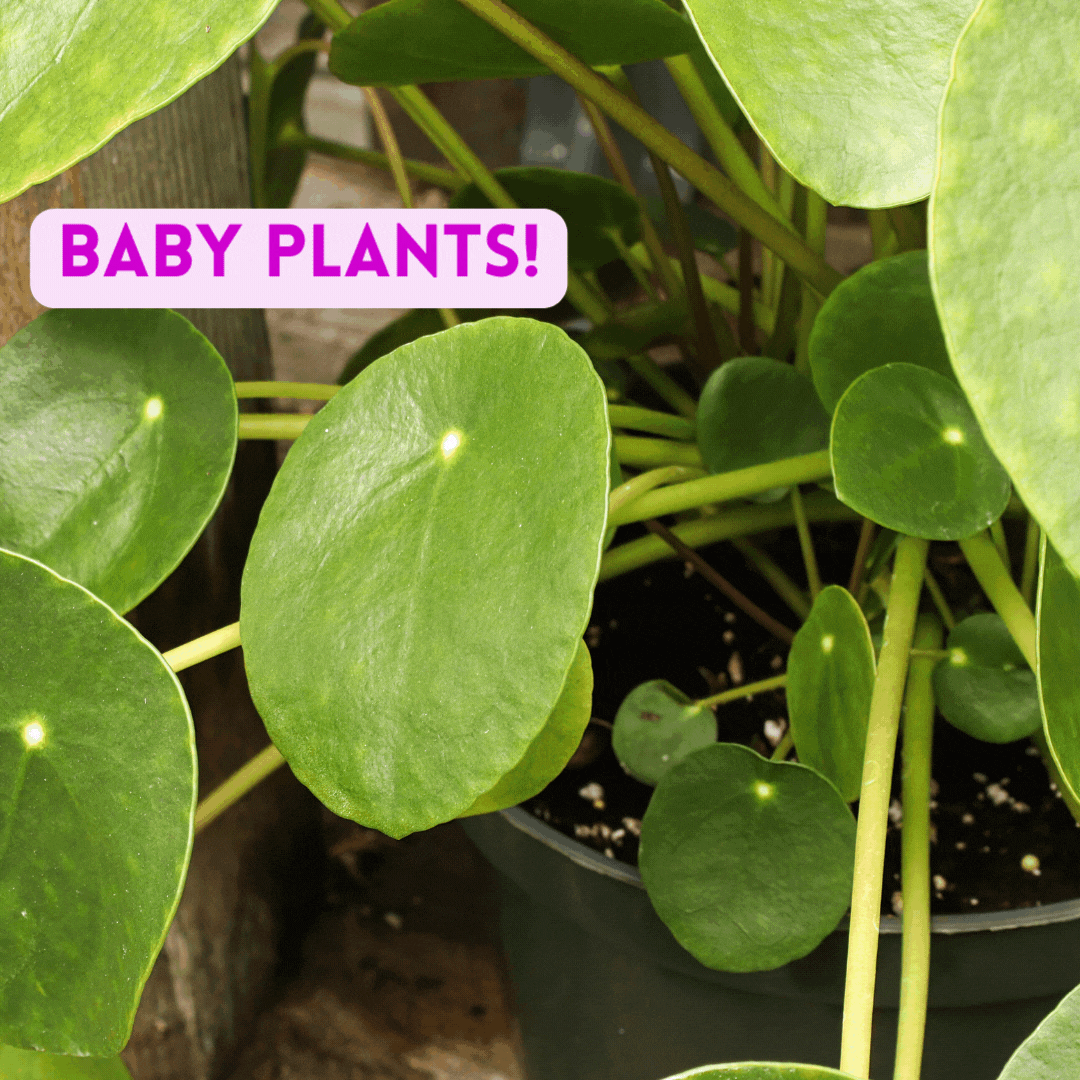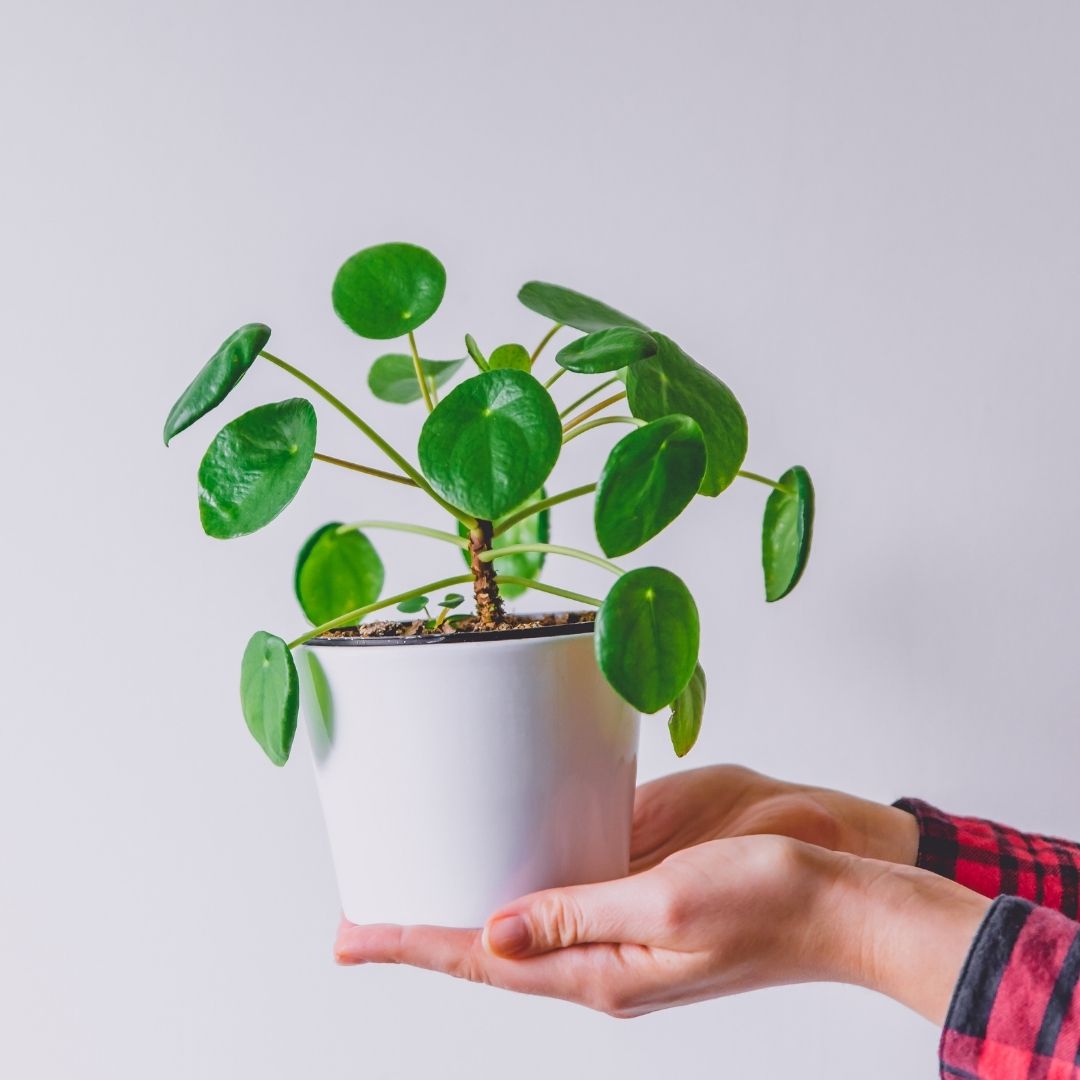Pilea peperomioides has become extremely popular as a houseplant in the past several years! Originating in the yunnan province of southern China, it seems like everyone wants one of these cute little guys with its round, saucer-like leaves that seem to bounce with every movement! It is also boasted as being a beginner houseplant that many people can easily take care of!
Unfortunately, I’ve found that without proper instruction or care information, this plant can actually be difficult for beginners. But don’t worry. Because this article has eveything you need to know to be able to set up your plant for success, so that it becomes the easy, low-maintenance plant that everyone talks about!
So if you want your plant to have huge, full leaves like you see on social media, then you’ll definitely need to read below to find out exactly how to care for your pilea peperomioides!
Note: This article may contain affiliate links, which help to support this website at no additional cost to you!
In this article we are talking about pilea peperomioides, which is also known as:
- Chinese money plant
- UFO plant
- pancake plant
- missionary plant
- friendship plant
- coin plant
These names are also given to other houseplants, such as plants within the crassula and kalanchoe families. So if you have one of these little guys, make sure you become familiar with its scientific name! This will help you avoid a mix-up in the future!
Pilea Peperomioides Light Requirements

The pilea peperomioides may look like a tropical plant, but it is actually a type of semi-succulent. Being a succulent, it prefers lots of bright, indirect light. It can even handle short periods of direct sunlight, but too much sun can cause the leaves to turn yellow. Because of this “bright, but not too bright” balance, this little plant can be quite picky until it finds its perfect place within your home.
Some signs you can look for are that if your plant isn’t growing very quickly (or at all), it could be needing more light. Once it is moved to a brighter location, it should begin to grow more new leaves. (This is what happened to my pilea when I first got it! While it wasn’t getting enough light, it didn’t seem to grow at all… then I moved it into an east-facing window, and boom! New growth like crazy!)
On the flip side, if your plant is getting too much light, the leaves will begin to curl outward (like an umbrella), and there might even be “sunburn” spots on the leaves. This shows up as yellow or brown spots on the leaves.

Once your plant has found its perfect light spot, be sure to rotate the pot every couple of days. This is because the pilea tends to bend towards the light. So if you want your plant to look full and not curvy, make sure to rotate it!
Pilea Peperomioides Water Requirements
If you have other succulents, then you’ll know just how to water your pilea! This is because it likes consistent watering, but it also needs good drainage and doesn’t like to have its roots wet for long. If it stays wet for too long, it will be susceptible to root rot. Look for leaves that fall off without wilting, as well as thick, browning leaf stems. This is a sure sign of overwatering and means that you need to either lower your watering frequency, increase drainage in your pot, or possibly even move it to a smaller pot (so there isn’t as much moist soil).
The key here is that you don’t want to give it too much water, and make sure that you also don’t let it sit in water for long periods of time!
Another key to be aware of is that your pilea doesn’t like hard tap water. If you start to see holes in your plants’ leaves, then make sure that you switch to either distilled water, rainwater, or filtered water. Also, if you start to see white spots on the bottom of your leaves, this could be a mineral buildup from hard water. If you see these white spots, then you can wipe them clean with a damp cloth, being careful to not damage any of the leaves. Then switch to either filtered, distilled, or rain water. Here is the water filter that I personally use for my plants! (I have the smaller, indoor plant filter that I’ve installed under my bathroom sink!)
A final sign of water stress is when your pilea is changing its leaf shape. If the leaves are curling upward (like a cup), then this is a sign that it is receiving too much water. Be sure to either improve drainage in your pot, or to let it dry out a bit more between watering. This means that you need to let the top 1-2 inches of soil dry before you water your plant again. In smaller pots and plants, this might mean you are watering your pilea every couple of days, but in larger plants, this could mean you are watering once a week or so. Then adjust your watering schedule in the spring and fall during the seasonal changes in the growing season.

Pilea Peperomioides Fertilizer
Fertilize with a balanced fertilizer every other month during spring and summer (or according to the fertilizer label!). Your plant will be much happier with a nutrient boost! Use a well-balanced fertilizer (meaning that all three numbers are about the same) if you want an overall healthy plant. I personally use the Miracle-Gro Houseplant fertilizer, since it is at a low concentration so I can fertilize my plants whenever I water and I don’t have to worry about over-fertilizing. I’ve used other fertilizers in the past, but have found some to have strong odors. I’ll keep this updated if I find anything I like more!
Note: Be sure that you don’t fertilize your plant during the winter months when it is dormant. This can cause your pilea (and most other houseplants) to get a chemical burn.

Pilea Soil and Potting Needs
Like most succulents, pilea peperomioides plants do best with a well-draining soil. This can either be a cactus and succulent soil mix, or regular houseplant soil amended with sand or perlite. This also includes making sure that your pot has at least one drainage hole to allow any excess water to drain out the bottom of the pot.
Also be sure that your pot isn’t too large for your plant. A good rule of thumb is to make your pot slightly smaller than how wide your plant is. This will ensure that the roots have plenty of space to grow, but they also don’t have too much soil, which can hold excess water and cause overwatering problems. It’s better to let it get a bit root-bound than to have your plant in a pot that is too large.
Some good pot choices for this plant is either a terracotta pot or a plastic pot, as long as it has holes in the bottom that allow for good drainage. If it doesn’t have any holes, then you can easily drill your own holes with some tape and a drill!

Pilea Peperomioides Temperature
When it comes to the pilea plants, there is a lot of confusion about what the optimal temperature range is. Many people believe that this plant needs to be kept in a warm environment at all times, but this isn’t true. In fact, pilea plant can thrive in a wide variety of temperatures, making it an excellent choice for those who live in colder climates. The ideal temperature range for your plant is between 60 and 75 degrees Fahrenheit.
The only caution that I have, however, is that while your plant is in lower temperatures in the winter, this usually also means that it will have lower light levels and may even go dormant. To account for this, you need to also lower your watering. If not, you might find yourself with root rot problems.
Pilea Peperomioides Pests
While this plant is generally pest free, there are a few pests that can occasionally bother this little guy. Identification and proper treatment of these pests is vital for keeping your plant healthy. Just make sure that as soon as you find insects on your plant, that you separate it from any other houseplants that are not yet infected. This can greatly reduce the spread.
The most common pests that affect this plant are spider mites and mealybugs.
To control for spider mites, you can mist your plant with water every few days (spider mites don’t like being wet!), or you can try spraying it with an insecticidal soap or neem oil.

For mealybugs, it is important that you spray your plant thoroughly with an insecticidal soap. Most mealybugs like to stay in little corners of your plants, which makes it very difficult to reach when spraying. I’ve found it most helpful to repeat applications every few weeks (according to the instructions on the label). For smaller plants, or to get rid of your mealybugs quickly, you can also comb through your plant with q-tips and rubbing alcohol. Simply coat the mealybugs with the alcohol and this will be enough to kill them.
Fungus gnats can also be a problem with this plant, but they usually only appear if you are also giving your plant too much water. By fixing your watering habits, this should keep the soil more on the dry side, which will also keep the fungus gnats away!
Pilea peperomioides Propagation
The Pilea peperomioides is an easy-to-propagate houseplant. There are several methods for propagating this plant, but the most popular (and easiest methods) are by division and by stem cuttings.
Division: The easiest way to propagate this plant is by dividing the mother plant and the baby plants it into several new plants. Simply take your plant out of its pot, loosen the soil, and separate the baby plant from the mother plant and repot it into its own new pot.

If you don’t have any baby plants, then you can also divide your plant into several smaller plants by cutting it into 3-inch pieces with a sharp knife and rooting these sections in water or soil. This method is a bit more risky, however, so I would suggest that if you don’t have any baby plants that you instead use the stem cutting method.
Stem Cuttings: Another way to propagate this plant is by taking stem cuttings. To take stem cuttings, you will need to prune leaves from the main stem of your plant. The best time to take stem cuttings is when new growth begins to appear on the plant. When removing the leaf from the mother plant, you will need to use a sharp knife to cut away a small (think scale-like) portion of the stem. This stem portion will be where the new roots will grow.

In conclusion, the pilea plant is a low-maintenance houseplant that can be enjoyed by anyone as long as you follow these simple care tips and remember to treat it more like your succulent plants (with a bit less sunlight). But by implementing these care tips, your plant will grow and thrive in your home and you’ll have your very own insta-worthy plant in no time!
For more ideas on what plants to grow as beginners, check out my post on Hard-to-Kill Houseplants! Then, if you want personalized plant care help, join my Facebook group Houseplants for Plant Killers! Because we’re all on this journey together!
Happy Digging!
Frequently Asked Questions:
How often do you water a Pilea?
How often you should water your Pilea depends on a variety of factors, including the climate, pot size, and type of soil. In general, aim to water your Pilea every 5 to 7 days or so. The best rule of thumb is if the potting mix feels dry to the touch an inch below the surface, it’s time to water again.
Do Pilea like to be misted?
Pilea plants enjoy higher levels of humidity, so yes, they would enjoy being misted! Some otehr ways to achieve higher humidity levels are to place your plant on a pebble tray filled with water, or to place it near other water-loving plants such as pothos, philodendron, or ferns.
Are Pilea peperomioides easy to take care of?
Pilea plants are easy to take care of as long as you remember that they act more like a succulent than a tropical plant. Give it lots of bright indirect light and make sure that it has a chance to dry in between watering. The most common killer of this houseplant is by overwatering.
Is a Pilea a Peperomia?
No. The pilea actually comes from the Pilea genus. This is unlike the peperomia that comes from the Piperaceae genus (or the pepper family). The pilea peperomioides originates from southern China and has distinct differences from the peperomias that we also know and love.
What does it mean when your Pilea leaves curl?
Pilea leaves are normally flat, coin-shaped leaves protruding from a central stem. If your leaves are curling inward (like an umbrella), then this is a sign that it is getting too much light. But if your leaves are curling outward (like a cup), then this is a sign that your plant is getting too much water. Pretty crazy, right?!
Can I put my Pilea outside?
You can place your pilea outdoors in the warmer months, however, be careful to shade your plant from any hot direct sunlight. This plant can deal with only a few hours of morning or evening direct sunlight, so make sure that if you move your plant outdoors, that it is placed in a shaded location, such as under a covered patio or porch.
Why do Pilea leaves turn yellow?
Pilea leaves can turn yellow because of a number of different factors. First, they can yellow if your plant is getting overwatered. These yellow leaves will be fat, filled with water, and will drop off your plant. Next, if your plant is underwatered, the leaves will yellow, but then turn a gray-brown as it shrivels up and ultimately falls off the plant. Then last, the leaves will turn yellow but maintain green markings within the leaves if your plant is lacking in nutrients. This would require you to start a fertilizer routine for your Pilea.
